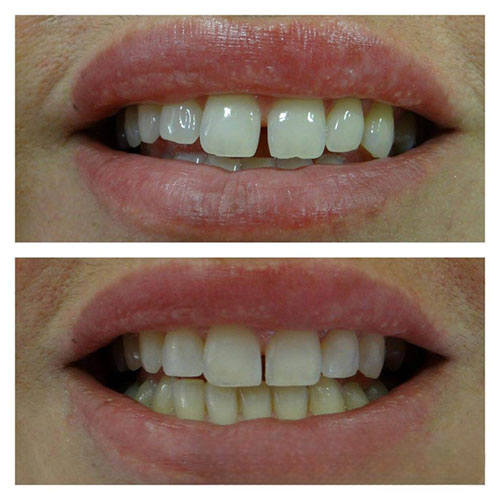Dental bonding

Dental bonding is a cosmetic dental procedure used to improve the appearance of teeth that are chipped, cracked, discolored, or misaligned. It involves applying a tooth-colored composite resin material to the affected tooth or teeth, then shaping and polishing it to match the natural contours of the teeth.
Here's how the dental bonding process typically works:
- 1. Preparation:
The dentist selects a shade of composite resin that closely matches the color of the patient's natural teeth. The surface of the tooth is then roughened slightly and conditioned to help the bonding material adhere properly.
- 2. Application of Bonding Material:
The composite resin material is applied to the tooth in layers. The dentist carefully sculpts and shapes the material to achieve the desired shape and contour, ensuring that it blends seamlessly with the surrounding teeth.
- 3. Curing:
Once the bonding material is in place, it is hardened and bonded to the tooth using a special curing light. This process helps the material become strong and durable.
- 4. Finishing Touches:
After the bonding material has cured, the dentist further shapes and polishes it to achieve a natural-looking finish that matches the rest of the teeth.
Dental bonding is a relatively quick and conservative treatment option compared to other cosmetic procedures such as dental veneers or crowns. It can typically be completed in a single visit to the dentist's office and often does not require anesthesia unless it is being used to fill a cavity
Dental bonding can address various cosmetic concerns, including:
- - Repairing chipped or cracked teeth
- - Filling in gaps between teeth
- - Reshaping misshapen teeth
- - Covering stains or discoloration
- - Protecting exposed tooth roots due to gum recession
While dental bonding is a versatile and effective cosmetic treatment, it may not be as durable or long-lasting as other options such as dental veneers or crowns. The bonding material can become stained or chipped over time, and may need to be repaired or replaced periodically. Additionally, proper oral hygiene and regular dental check-ups are important for maintaining the appearance and longevity of dental bonding.
Services
Dental services
know more about your treatment , symptons , procedure , costs and FAQ's.